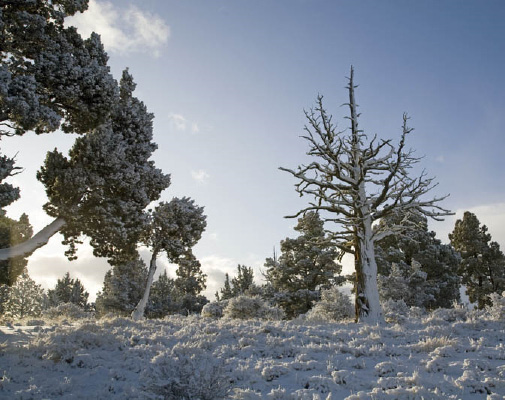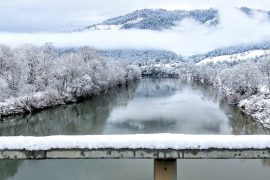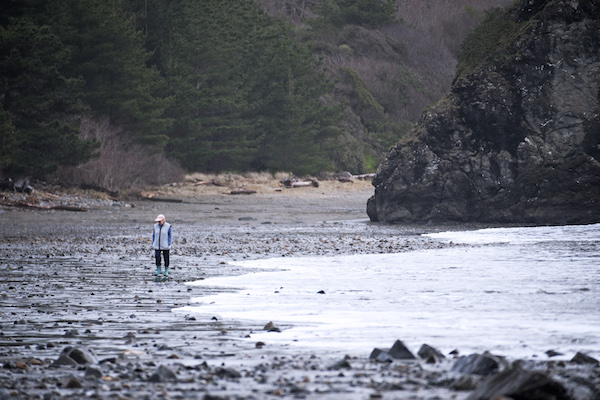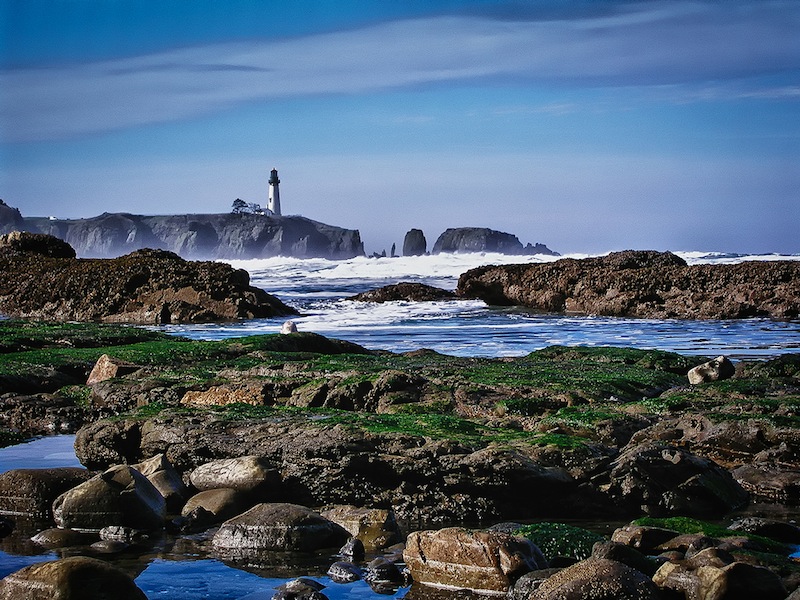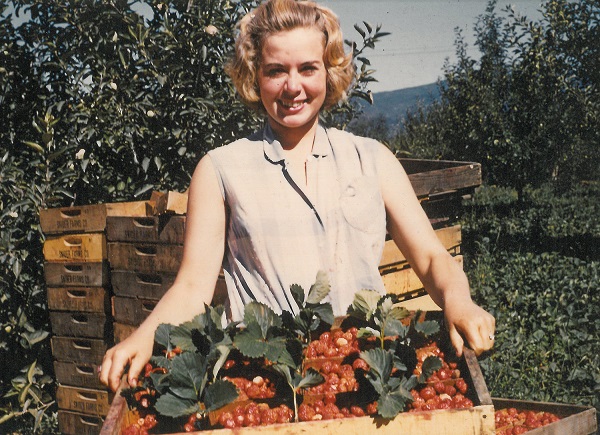Start planning your Winter Getaways around Oregon
This article was originally published Jan. 1, 2010. Send us updates in the comments!
The true beauty of Oregon is in its many faces and climates. Winter is no exception. Come January and February, the Oregon Coast will likely exhibit temperatures in the low 50s drizzled with rain. Over the Cascades and into the high desert, Bend is partly sunny and somewhere in the low 30s. Farther east to Baker City and you’re looking at 40s and clear blue skies. But this isn’t a weather report for cities that start with B, it’s a state-wide guide to some of the best ways to take advantage of the varied temps and terrains this winter.
Get a Dog’s-eye View of Mt. Bachelor
You might say that a tour with Oregon Trail of Dreams is the dogsled equivalent of a carriage ride with Sea Biscuit or a tandem bike tour with Lance Armstrong. In fact, the one-hour tour winding through an old-growth forest on Mt. Bachelor’s south side is a cakewalk for the 12-dog teams of Alaskan Huskies, many of which have Iditarod finishes under their harnesses. While the dogs are capable of pulling at hair-raising speeds, seasoned guides keep the four-legged athletes in check with downhill speeds rarely topping 15 miles per hour. Cost: $75 for adults, $30 for children less than 80 pounds, with maximum passenger capacity of 450 pounds per sled. If you’re looking for a full-day affair, opt for the marathon trip to Elk Lake Lodge and back for $450 for two adults, including lunch. For more information, look under the services/activities tab of Mt. Bachelor’s website, mtbachelor.com.
Explore an Urban Legend
If you think urban-wilderness is an oxymoron, you haven’t spent much time in Portland’s Forest Park. At 5,100 acres, it’s the largest urban forest in the country– but it gets better. At its most southern point, the park meets up with Macleay Park, which then spills into Washington Park. The 30-mile Wildwood trail spans all three parks and is crisscrossed by miles and miles and miles of single-track and fire roads. “Even traversing our regular routes backwards can provide a novel run,” says ruben Galbraith, an ultra runner and leader of Trail Factor running club (trailfactor.com). This 6-mile run is one of his staples: Start at Lower Macleay parking lot (NW 29th St. and Upshur St.) and run or hike west along Balch Creek until the trail intersects with the Wildwood Trail at the Stone House (a defunct public restroom built in the 1930s as part of the Works Progress Administration). Bear left at the Wildwood Trail and wind up to Pittock Mansion. On a clear day, you’re rewarded with panoramic views of downtown Portland, Mt. Tabor and Mt. Hood. From the mansion, double back or keep going another 3.5 miles to the Oregon Zoo and the southern-most point of the Wildwood Trail. Detailed maps are available at the Forest Park Conservancy (forestparkconservancy.org).
Go Off Piste in the Wallowas
The Cascades may get most of the glory, but for breathtaking views and dry and plentiful snow, you can’t beat the Wallowa Mountains. To see these rugged peaks, grab a few friends and book a back-country yurt. Experienced off-pisters will get the most bang for their buck at one of the two self-catered camps run by Wing Ridge Ski Tours (wingski.com). As long as you pass the outdoor skills assessment, you can ski (or snowshoe) into one of two camps without a guide for the rate of $55 per night per person. Each camp is composed of a cook tent, sauna tent, latrine and two five-person sleeping tents. Don’t want to go it alone? Wing ridge offers guiding service starting at $200 a day. If you’d rather not worry about cooking or navigating, Wallowa Alpine Huts (wallowahuts.com) offers four-day all-inclusive trips for $625 a person.
Find Fresh Tracks at Mt. Bailey
Experienced skiers quench their thirst for fresh tracks and massive amounts of snow on Mt. Bailey, just five miles north of Crater Lake National Park. The 8,360-foot Cascade mountain peak catches winter storms from the coast, collecting 500 to 600 inches of snow each season and making for many waist-deep powder days. Experienced backcountry skiers can skip the cat and skin up the ungroomed mountain. But for $350 per person, Cat Ski Mt. Bailey (catskimtbailey.com) takes skiers on six to eight runs down chutes, tree runs and open bowls. Guides determine which part of the 6,000 acres of terrain will offer the best tracks and weather each day for the best experience. Basic lodging, food and drinks are available at the Diamond Lake Resort (diamondlake.net), where rustic motel rooms range from $79 to $109 a night and cabins range from $179 to $559 depending on size and vintage. Rates are higher on weekends and holidays.
Hike the Badlands
Solitude. Serenity. Silence. That, says David Eddleston, is reason to hike in the 30,000-acre high desert wilderness called Badlands, 15 miles east of Bend on Hwy 20. Eddleston, a Scotsman and veteran of the British Army, moved to Bend ten years ago and soon fell in love with the Badlands’ rugged canyons, jagged lava formations and ancient juniper trees. Today he leads a volunteer stewardship group, Friends of Oregon Badlands Wilderness and stocks maps at trailheads to help visitors navigate the 45 miles of trails. Hiking in the Badlands is particularly pleasant in the winter when the trails aren’t dusty and afternoon temperatures can reach 50 degrees. The Flat Iron Trail and Badlands Rock Trail, both about 6 miles, are popular routes, but Eddleston’s personal favorite is the 6- or 10-mile Larry Chitwood trail loops. These trails are rarely visited, easy to bushwhack without getting lost, and marked by rocky outcroppings and 360-degree views of the Badlands and Cascade Mountains. When visiting the Badlands, keep an eye out for pictographs and obsidian arrow heads – but leave them undisturbed. Also expect to see wildlife such as deer, coyotes or yellow bellied marmots. For more information, go to the website of the Oregon Natural Desert Association (onda.org).
Get Away from it All at Elk Lake
A winter excursion into Elk Lake Resort (elklakeresort.net) in the Central Oregon Cascades can mean any number of things: a cross-country ski adventure, a snowmobile outing or a cozy snow cat ride. No matter how you travel the scenic 11-mile route from Dutchman Flat Sno-Park into the snowbound resort, it ends in a winter wonderland of comfy cabins ($199 to $379 a night depending on the cabin) and a revamped lodge serving hearty American cuisine. The resort is an ideal base camp for winter recreation, whether it’s exploring the backcountry, crosscountry skiing the groomed 7-mile Elk Lake Loop or touring via snowmobile (available for rent at the resort). But while there’s no shortage of things to do at Elk Lake Resort, part of its appeal is the luxury to do nothing.
Lose the Crowds at Anthony Lakes
Don’t let the word “resort” fool you. Anthony Lakes Ski Resort (anthonylakes.com), located 35 miles northwest of Baker City, is one of the more beautiful, isolated and uncrowded ski areas around. What it lacks in on-site lodging and dining, it makes up for in family-friendly skiing and champagne powder. Open Thursdays through Sundays and most holidays, the 21-run resort has one triple chair, a hand tow and a wonder carpet for youngsters. Tickets cost $39 for adults and $10 for kids six and younger. Guided snowcat skiing is available for $199 per person per day. Anthony Lakes also boasts 33 kilometers of gorgeous groomed Nordic trails for all levels of classic and skate skiers ($13). North Powder is the closest town, 19 miles away, but we recommend driving the extra 15 miles to the historic Geiser Grand Hotel (geisergrand.com) in Baker City and kicking back at the award-winning Barley Brown’s Brewery (barleybrowns.com).
Ride the Steelhead Train
Grab your fly-rod and hop on the Steelhead Train in northeast Oregon, in the heart of the Columbia Basin. Now in its eighth season, the 1950s-era, self-propelled, 52-seat train car, which runs on Saturdays and Sundays in February and March, departs from the Minam Motel and Market in Minam and shuttles a maximum of 40 anglers hole to hole along a 10-mile Wild and Scenic stretch of the Wallowa River. Catching fish isn’t guaranteed, but an experienced guide is on board to help. Book a ticket through Minam Motel (minammotel.com) – $75 full day or $40 half day. The train also carries additional non-angling passengers for a scenic ride. The quaint and convenient eight-room Minam Motel has some kitchenette rooms, but many passengers opt to sleep and dine in La Grande or Enterprise.
Find the Perfect Storm
Oregon’s coast comes alive in the winter months when big storms blow in, bringing 50-mile-an-hour winds and 40-foot waves. There is no shame in spectating from the comfort of the indoors. But, to experience the full force of the storms rolling off the Pacific, put on a parka and head to a high ground? “I don’t recommend going right out on the beach,” says Pat Corcoran, coastal hazards outreach specialist for Oregon State University, citing sneaker waves, rip currents and fastmoving debris as some of the biggest safety threats. With hundreds of miles of public shoreline, however, the Oregon Coast has no shortage of vantage points for soaking in a storm. Here are some of Corcoran’s favorites:
Fort Stevens State Park, near Astoria: A choice spot is the observation deck at Parking Lot D. “It’s good exposure, but you’re not tempted to walk out on the jetty,” says Corcoran.
Seaside Promenade, downtown Seaside: Mix storm watching with boutique hopping on the historic promenade.
Ecola State Park, north of Cannon Beach: The park offers several viewpoints along nine miles of rocky shoreline.
Pelican Pub & Brewery, Pacific City: Feel the maelstrom of gusting winds swirling around Cape Kiwanda, then head inside for a pint of The Perfect Storm.
Devil’s Punchbowl, north of Newport: The main attraction at this two-acre state park is a bowl-shaped rock formation where water swirls and sprays.
Cape Blanco, north of Port Orford: Oregon’s western-most point is ideal for watching the waves crash into shore. Be sure to check out the historic lighthouse.
Brave the Winter Greens
If the $220 summer green fee at Bandon Dunes has kept you from playing one of its renowned links-style courses, here’s your chance. During the winter months, you can play for less than half the price, thanks to January and February green fees of $75 and $90 respectively. While the price goes down, the quality of play doesn’t. Winter weather is generally mild, and because the courses are built on sand, they drain quickly when it rains. “Winter golf here is a lot like what you’d get playing in Scotland,” says the resort’s head golf professional Jeff Simonds. Of course, winter at the coast isn’t always marked by wet weather. Locals describe February as a secret summer, with sunny days and balmy (relatively speaking) temperatures. “Some people are actually disappointed if it’s sunny,” says Simonds.


